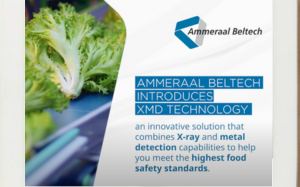Update on campylobacter survey publication
- Like
- Digg
- Del
- Tumblr
- VKontakte
- Buffer
- Love This
- Odnoklassniki
- Meneame
- Blogger
- Amazon
- Yahoo Mail
- Gmail
- AOL
- Newsvine
- HackerNews
- Evernote
- MySpace
- Mail.ru
- Viadeo
- Line
- Comments
- Yummly
- SMS
- Viber
- Telegram
- Subscribe
- Skype
- Facebook Messenger
- Kakao
- LiveJournal
- Yammer
- Edgar
- Fintel
- Mix
- Instapaper
- Copy Link
Posted: 8 September 2014 | The Food Standards Agency | No comments yet
The Food Standards Agency has confirmed its plans for publishing the quarterly results from its survey of campylobacter on shop-bought chicken…


The Food Standards Agency has today confirmed its plans for publishing the quarterly results from its survey of campylobacter on shop-bought chicken. The FSA will name retailers, alongside campylobacter levels, when it releases its next set of results in November.
Steve Wearne, Director of Policy at the FSA, said:
‘Tackling Campylobacter is the FSA’s top priority in the fight against food poisoning and we want people to have the clearest possible information on the food they buy. We have set a clear expectation for poultry producers and retailers to take action to reduce levels of campylobacter in chicken.
‘We published details about levels of campylobacter found in shop-bought chickens earlier this year, but chose not to name retailers because the data was not robust enough. Since then, double the number of samples have been collected, which better reflects the situation across the country.’
The 12-month survey is running from February 2014 to February 2015 and is looking at the prevalence and levels of Campylobacter contamination on fresh whole chilled chickens and their packaging. The results will enable the FSA to determine if changes in practice across the poultry supply chain are reflected in a reduction of contamination at retail.
Researchers are testing 4,000 samples of whole chickens bought from UK retail outlets and smaller independent stores and butchers.
The first set of quarterly data was released on 5 August 2014. In a Chief Executive’s report published today the FSA has confirmed its plans to publish further quarterly results in November 2014, February 2015, April 2015 and a final report of the whole survey in July 2015. All of the future quarterly publications will name the major retailers against their summary sample results.
The FSA is working with the poultry industry to reduce levels of Campylobacter on poultry. Campylobacter is killed by thorough cooking, however, it is the most common form of food poisoning in the UK, affecting an estimated 280,000 people a year.
Chicken is quite safe as long as consumers follow good kitchen practice:
- Cover and chill raw chicken – Cover raw chicken and store at the bottom of the fridge so juices cannot drip on to other foods and contaminate them with food poisoning bacteria such as Campylobacter.
- Don’t wash raw chicken – Cooking will kill any bacteria present, including Campylobacter, while washing chicken can spread germs by splashing.
- Wash used utensils – Thoroughly wash and clean all utensils, chopping boards and surfaces used to prepare raw chicken. Wash hands thoroughly with soap and warm water, after handling raw chicken. This helps stop the spread of Campylobacter by avoiding cross contamination.
- Cook chicken thoroughly – Make sure chicken is steaming hot all the way through before serving. Cut in to the thickest part of the meat and check that it is steaming hot with no pink meat and that the juices run clear.









